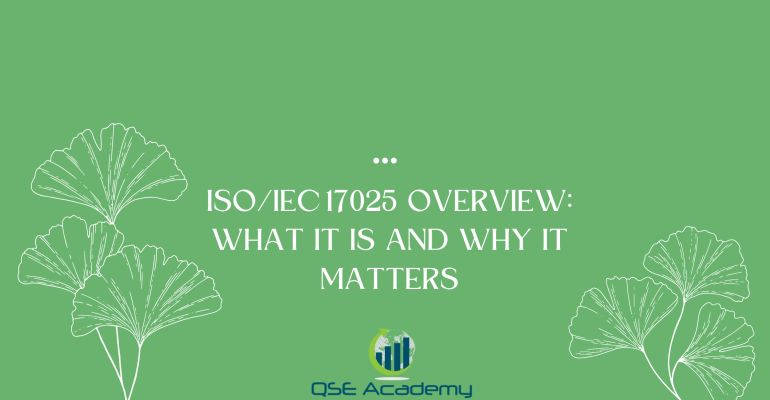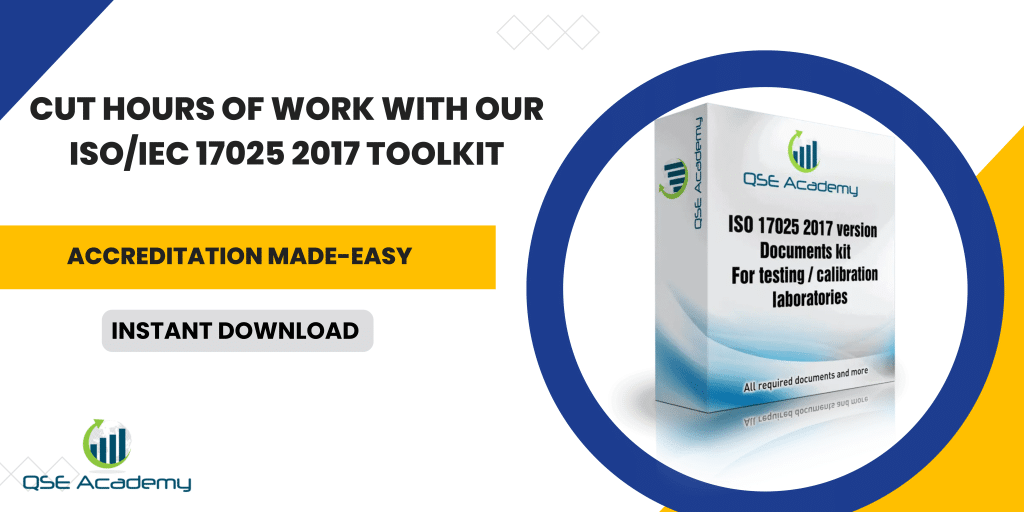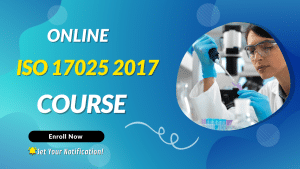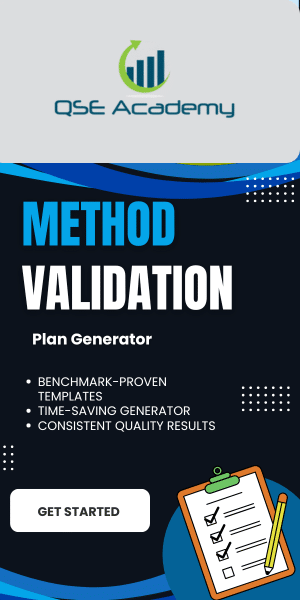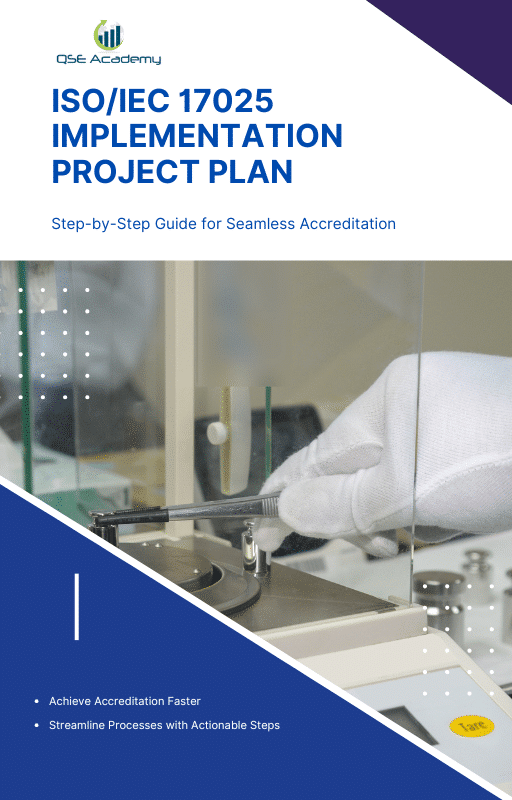ISO/IEC 17025 Overview: What It Is and Why It Matters
Last Updated on October 13, 2025 by Melissa Lazaro
Understanding ISO/IEC 17025 Beyond the Buzzwords
Most laboratories have heard of ISO/IEC 17025. It’s mentioned in client contracts, regulator requirements, and quality meetings—but ask five people what it actually means, and you’ll probably get five different answers.
That’s exactly why this overview exists. ISO/IEC 17025 isn’t just another box to tick—it’s the international standard that defines what competence looks like in a testing or calibration laboratory. It shapes how reliable your results are, how much confidence clients have in your data, and whether your reports hold weight in international markets.
In plain terms, ISO/IEC 17025 is the foundation of trust in laboratory work. It ensures that your methods, equipment, and people all operate under a system designed to deliver accurate and defensible results. Whether you’re testing materials, calibrating instruments, or analyzing samples, this standard is what connects your technical ability to recognized global credibility.
Here’s what you’ll gain from this article:
-
A clear explanation of what ISO/IEC 17025 actually covers and why it exists.
-
Insight into how accreditation works and who truly benefits from it.
-
The key advantages of implementing ISO/IEC 17025 in both large and small laboratories.
-
Clarity on how it compares with other standards and the common myths that often cause confusion.
This isn’t a theoretical breakdown—it’s a practical, plain-English guide built from years of working with laboratories that successfully achieved and maintained accreditation. By the end, you’ll understand not just what ISO/IEC 17025 is, but why it genuinely matters to every laboratory that values accuracy, consistency, and credibility.
What Is ISO/IEC 17025? (Definition, Purpose, and Scope)
At its core, ISO/IEC 17025 is the global benchmark for competence in testing and calibration laboratories. It defines what a lab must do—not just to produce accurate results once, but to consistently deliver reliable, traceable, and impartial data.
Think of it as the quality language that connects every credible laboratory in the world. Whether you’re measuring water purity, verifying electrical equipment, or testing pharmaceuticals, ISO/IEC 17025 sets the expectations for how results should be obtained, documented, and trusted.
The standard is built around two major components:
-
Management Requirements – These ensure that your laboratory operates under a structured quality management system. They cover document control, corrective actions, internal audits, and management review. In simple terms, this is how your lab stays organized, transparent, and accountable.
-
Technical Requirements – These define what makes your lab technically competent. They include personnel qualifications, equipment calibration, measurement traceability, testing methods, and the validation of results. This is where scientific precision meets operational discipline.
ISO/IEC 17025 applies to any laboratory performing testing or calibration, regardless of its size or scope. It’s just as relevant for a small in-house testing facility as it is for a national reference laboratory. The point isn’t how big you are—it’s how reliable your results are.
Understanding this foundation is essential before diving into accreditation, benefits, or implementation. Once you know what the standard truly demands, you can build systems that not only comply—but also strengthen your lab’s credibility and client confidence.
Why ISO/IEC 17025 Matters for Laboratories (Core Benefits)
Ask any laboratory leader what they want most, and the answer usually comes down to one word: trust. Clients need to trust your results. Regulators need to trust your methods. Your own team needs to trust the data they generate.
That’s exactly where ISO/IEC 17025 makes its impact—it builds that trust from the ground up.
When a laboratory aligns with ISO/IEC 17025, it’s not just meeting a checklist of requirements. It’s proving that its systems, methods, and people work together to produce technically valid results. The standard sets out a framework that ensures every measurement, test, or calibration is consistent, traceable, and defensible.
Here’s what that looks like in practice:
-
Credibility with Clients and Regulators
ISO/IEC 17025 accreditation sends a clear message: your data is reliable, your equipment is calibrated, and your processes are verified. That assurance opens doors to new clients and market opportunities because your reports are recognized globally. -
Consistency in Results
The standard pushes laboratories to define, monitor, and continually improve their processes. That means fewer errors, less rework, and more dependable outcomes over time. -
Improved Efficiency and Confidence
By clarifying roles, responsibilities, and procedures, ISO/IEC 17025 eliminates confusion. Teams spend less time guessing and more time focusing on the quality of their work. -
Enhanced Reputation and Competitive Advantage
Accredited laboratories often become preferred partners for manufacturers, government agencies, and international clients. Accreditation doesn’t just confirm technical competence—it positions your lab as a credible, professional organization.
One mid-sized environmental lab I worked with discovered this firsthand. After achieving ISO/IEC 17025 accreditation, they noticed something beyond compliance—clients stopped asking for repeat tests. Their results carried more weight, and their reputation in the industry quietly transformed.
The real value of ISO/IEC 17025 isn’t in the certificate on the wall—it’s in the confidence that every number your lab reports can stand up to scrutiny anywhere in the world.
Who Needs ISO/IEC 17025 Accreditation? (And Who Doesn’t)
One of the most common questions I hear from laboratories is, “Do we really need ISO/IEC 17025 accreditation?”
The short answer? If your results influence decisions, safety, or compliance—then yes, it’s more than worth it.
ISO/IEC 17025 accreditation is relevant to any organization performing testing, calibration, or sampling where the accuracy and reliability of results matter. This includes:
-
Independent testing or calibration laboratories serving clients and regulatory bodies.
-
In-house or company-owned labs that verify product quality, equipment performance, or manufacturing consistency.
-
Government or research facilities that generate data used in policy-making or standards development.
-
Contract and third-party labs working with industries like food, pharmaceuticals, environmental testing, construction, and energy.
What surprises many organizations is that ISO/IEC 17025 isn’t limited to commercial operations. Even internal company labs—those that never issue public test reports—can benefit from accreditation if their data affects critical decisions or product compliance.
There are, however, a few cases where full accreditation may not be necessary. For example, if your lab performs only simple, low-risk tests for internal monitoring or process checks, implementing a quality management approach inspired by ISO/IEC 17025 might be enough. The important thing is aligning your level of control with the impact of your results.
In essence, accreditation isn’t about prestige—it’s about proving competence. It tells your clients and stakeholders that your measurements aren’t just “good enough,” but that they meet internationally recognized standards of reliability and precision.
Whether you operate a single bench or an entire testing facility, ISO/IEC 17025 provides the framework to show the world you can back your results with confidence.
ISO/IEC 17025 vs ISO/IEC 17020: Understanding the Difference
It’s easy to mix up ISO/IEC 17025 and ISO/IEC 17020—they sound similar, and both deal with quality and competence. But they apply to very different types of organizations. Understanding that distinction can save you from building the wrong system or applying for the wrong accreditation.
Here’s the simple breakdown:
-
ISO/IEC 17025 applies to testing and calibration laboratories. It ensures that your lab can generate technically valid data through verified methods, trained personnel, calibrated equipment, and controlled environments.
In short, it’s about the accuracy and reliability of measurements and results. -
ISO/IEC 17020 applies to inspection bodies. These organizations don’t test or calibrate directly—they evaluate products, processes, or installations to determine conformity against specified requirements.
Think of building inspectors, vehicle inspection centers, or safety compliance assessors. They review and report findings, but they don’t necessarily perform the testing themselves.
Both standards share a common goal—confidence and impartiality—but their focus differs:
-
ISO/IEC 17025 validates data integrity and technical performance.
-
ISO/IEC 17020 validates inspection processes and judgment consistency.
In practice, many organizations operate both types of functions under one roof. For example, an engineering company might have a testing lab accredited to ISO/IEC 17025 and an inspection unit accredited to ISO/IEC 17020. Each serves a different purpose but complements the other.
Knowing which standard fits your operation is crucial before starting the accreditation process. It determines the structure of your documentation, the type of assessment you’ll face, and the recognition your results will receive.
Put simply:
If your team tests, measures, or calibrates, ISO/IEC 17025 is your roadmap.
If your team inspects, evaluates, or verifies, ISO/IEC 17020 is the right framework.
Understanding that distinction upfront helps you build the right foundation for technical credibility and client confidence.
Common Myths About ISO/IEC 17025 (And the Truth Behind Them)
Every standard collects its share of misconceptions over time, and ISO/IEC 17025 is no exception. Many laboratories hesitate to pursue accreditation because of what they’ve “heard” — stories that sound convincing but don’t match reality. Let’s separate fact from fiction.
Myth 1: ISO/IEC 17025 is only for large, well-funded laboratories.
Absolutely not. The standard was written to apply to any laboratory — big or small, public or private. A small environmental or food-testing lab can meet the same requirements as a national facility, just on a scale that fits its size and operations.
Accreditation is about competence, not capacity. The key is documenting and demonstrating that your lab’s processes are controlled, your staff are qualified, and your measurements are traceable.
Myth 2: It’s mostly paperwork and bureaucracy.
It can feel that way if implemented poorly. But when done right, ISO/IEC 17025 streamlines how your lab operates. Procedures, records, and reviews all serve one purpose: consistency.
Once teams see that good documentation reduces mistakes and confusion, the “paperwork” starts to look more like an efficiency tool than a burden.
Myth 3: Accreditation costs too much and offers little return.
Accreditation does require investment, but the payoff comes in credibility and opportunity. Many industries, especially in manufacturing, healthcare, and environmental testing, require ISO/IEC 17025-accredited data to accept results. Without it, labs often struggle to compete for major contracts or regulatory recognition.
A mid-sized calibration lab I worked with once thought accreditation was unnecessary. When a new client insisted on ISO/IEC 17025 recognition, they had to scramble to upgrade their system. After getting accredited, they didn’t just retain that client—they won three more contracts because they could now show official competence.
Myth 4: Once accredited, the job is done.
Accreditation isn’t a one-time achievement. It’s an ongoing process of improvement, periodic assessments, and evidence-based performance. That might sound demanding, but it keeps your lab sharp and credible. In the long run, continual improvement strengthens your reputation far beyond compliance.
The truth is simple: ISO/IEC 17025 isn’t an obstacle—it’s a framework for confidence. It helps laboratories build systems that not only meet client and regulatory expectations but also elevate their professionalism and reliability.
Now that we’ve cleared the air around the myths, let’s look at the bigger picture—how ISO/IEC 17025 strengthens global recognition and client trust.
How ISO/IEC 17025 Supports Global Trade and Client Trust
Behind every reliable test report or calibration certificate lies one essential idea — trust that travels.
ISO/IEC 17025 is more than a technical standard; it’s the global language of laboratory confidence. It allows results produced in one country to be recognized and accepted in another, removing the need for repeated testing and cutting unnecessary costs and delays.
At the heart of this global recognition are Mutual Recognition Arrangements (MRAs), managed by organizations such as the International Laboratory Accreditation Cooperation (ILAC) and regional bodies. These agreements mean that once a laboratory is accredited to ISO/IEC 17025 by an ILAC-recognized accreditation body, its reports and certificates carry the same credibility across participating economies.
In practical terms, that means a calibration performed in your lab in the Philippines, Germany, or South Africa can be accepted by a client or regulator in Canada or Japan — without further verification. It’s international acceptance built on standardized confidence.
But this recognition doesn’t happen automatically. It’s earned through strict adherence to key principles within ISO/IEC 17025:
-
Impartiality: Ensuring that decisions and results are free from bias or external influence.
-
Competence: Demonstrating that staff, methods, and equipment consistently meet technical requirements.
-
Traceability: Showing that every measurement can be linked to recognized reference standards through documented calibrations.
For clients, that level of assurance makes all the difference. They can rely on your data for regulatory submissions, quality control, or product certification without hesitation. For laboratories, it means your work has value beyond borders.
In today’s interconnected industries—whether testing medical devices, analyzing food safety, or verifying environmental samples—ISO/IEC 17025 accreditation signals one thing: your results can be trusted anywhere in the world.
With global confidence established, the next step is internal—building a culture within the laboratory that keeps this credibility alive every day.
Building an ISO/IEC 17025-Ready Culture
Getting accredited is one thing; keeping your system strong year after year is another. The difference almost always comes down to culture. A lab can have perfect documentation and equipment, but if the people using them don’t understand why ISO/IEC 17025 matters, consistency eventually slips.
An ISO/IEC 17025-ready culture starts with clarity and ownership. Everyone—from technicians and analysts to supervisors—should understand what accuracy, traceability, and impartiality mean in their daily work. When staff see how their role fits into the bigger quality picture, compliance stops feeling like a burden and starts becoming second nature.
Here’s what that culture looks like in practice:
-
Shared Understanding
Start with plain-language training. When staff know the meaning behind key terms like nonconformity, validation, or measurement uncertainty, they make fewer mistakes and contribute to stronger internal audits. -
Consistent Communication
Hold brief quality meetings, not just annual management reviews. Regular discussion keeps issues visible and reinforces accountability before problems grow. -
Simplified Systems
ISO/IEC 17025 doesn’t demand complexity—it demands control. Use tools and templates that make compliance easy to follow. When systems are simple, people actually use them. -
Continuous Improvement Mindset
Encourage staff to suggest improvements. Most quality breakthroughs come from the people running the tests, not from management memos.
When teams understand the purpose behind the requirements, the system maintains itself. Accreditation stops being an event you prepare for—it becomes a reflection of how your lab works every day.
Now that we’ve covered the fundamentals of the standard, its benefits, and how to embed it into daily operations, let’s address the questions laboratories most often ask about ISO/IEC 17025.
FAQs — Understanding ISO/IEC 17025 in Practice
Even after learning the fundamentals, many laboratories still have practical questions about ISO/IEC 17025—especially around accreditation, timelines, and obligations. Here are a few of the most common ones, answered clearly and directly.
Q1: What’s the difference between ISO/IEC 17025 certification and accreditation?
This is one of the biggest points of confusion.
Certification applies to management systems, like ISO 9001, and is issued after an organization’s processes are reviewed for compliance.
Accreditation, on the other hand, applies to laboratories and focuses on technical competence—how accurately you perform tests or calibrations, not just how well you manage paperwork.
Accreditation confirms that your lab’s results are technically valid and internationally recognized under ISO/IEC 17025.
Q2: How long does it take to achieve ISO/IEC 17025 accreditation?
There’s no one-size-fits-all timeline, but most laboratories take six months to a year from initial gap analysis to final assessment.
The timeline depends on how mature your current system is and how ready your documentation, staff training, and equipment calibration records are.
Labs that start with a structured plan and clear ownership of each clause often move faster and experience fewer findings during assessment.
Q3: Is ISO/IEC 17025 accreditation mandatory?
Not always—but it’s becoming an expectation in most industries.
For sectors like food testing, pharmaceuticals, environmental analysis, or medical device calibration, accreditation isn’t just a competitive advantage—it’s a requirement for regulatory acceptance.
Even when it’s voluntary, clients increasingly prefer working with accredited labs because it removes the risk of questionable results and repeated testing.
Q4: What happens after we get accredited?
Accreditation isn’t the finish line—it’s the start of maintaining a proven system.
Your accreditation body will conduct surveillance assessments, usually every 12 to 18 months, to confirm that your lab continues to meet ISO/IEC 17025 requirements.
These ongoing reviews keep your system sharp and demonstrate continuous improvement.
ISO/IEC 17025 isn’t just about passing an audit—it’s about building consistent reliability into every part of your lab’s work. Understanding the answers to these core questions sets the stage for long-term success and confidence.
Now, let’s bring everything together and close with what ISO/IEC 17025 ultimately means for laboratories that take it seriously.
Why ISO/IEC 17025 Still Defines Laboratory Excellence
ISO/IEC 17025 has earned its place as the most trusted standard for laboratory competence—and for good reason. It doesn’t just tell you what to document or how to calibrate; it defines the mindset needed to deliver results that stand up to scrutiny anywhere in the world.
For laboratories, this standard bridges the gap between technical skill and professional credibility. It ensures that your methods are valid, your measurements are traceable, and your entire operation functions under a system built on accuracy, impartiality, and confidence.
In my experience, the most successful laboratories are the ones that treat ISO/IEC 17025 as more than a compliance tool. They see it as a framework for excellence—one that empowers teams, improves communication, and strengthens client trust. Accreditation becomes a reflection of how the lab works, not just a goal to achieve once.
If you’re planning to pursue ISO/IEC 17025 accreditation or strengthen your existing system, start by understanding the intent behind each requirement. Build a culture that values consistency, evidence, and improvement. That’s where the real transformation begins.
QSE Academy has guided laboratories around the world through every step of this process—from gap analysis and documentation to full accreditation support. Whether you’re just getting started or preparing for reassessment, the goal remains the same: help your lab operate with clarity, competence, and credibility.
ISO/IEC 17025 isn’t simply about compliance—it’s about confidence. And when your laboratory operates with confidence, the results speak for themselves.
I hold a Master’s degree in Quality Management, and I’ve built my career specializing in the ISO/IEC 17000 series standards, including ISO/IEC 17025, ISO 15189, ISO/IEC 17020, and ISO/IEC 17065. My background includes hands-on experience in accreditation preparation, documentation development, and internal auditing for laboratories and certification bodies. I’ve worked closely with teams in testing, calibration, inspection, and medical laboratories, helping them achieve and maintain compliance with international accreditation requirements. I’ve also received professional training in internal audits for ISO/IEC 17025 and ISO 15189, with practical involvement in managing nonconformities, improving quality systems, and aligning operations with standard requirements. At QSE Academy, I contribute technical content that turns complex accreditation standards into practical, step-by-step guidance for labs and assessors around the world. I’m passionate about supporting quality-driven organizations and making the path to accreditation clear, structured, and achievable.

